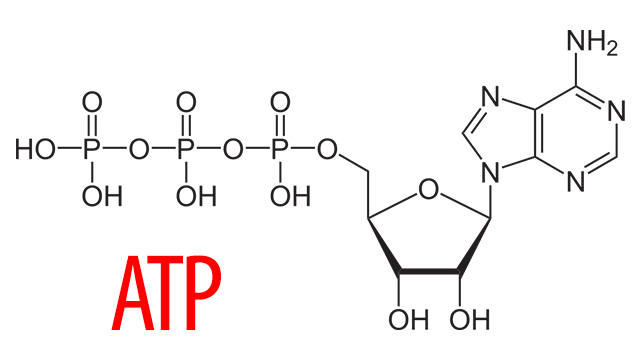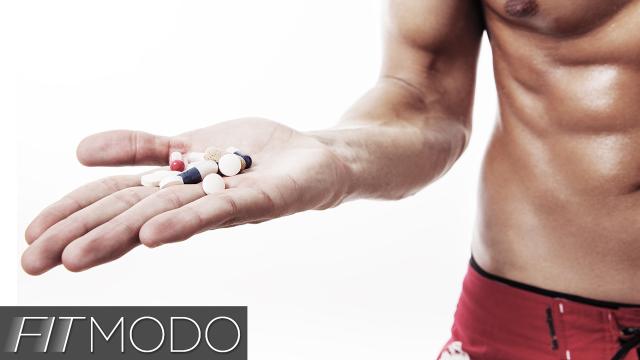Creatine has been wildly popular since the 1990s. It’s touted as a shortcut to gaining lean muscle mass, and packed into everything from supplement pills and powders to sports drinks. But how does it work, if at all? Is it even safe? Allow us to demystify this strange chemical beast.
Welcome to Fitmodo, Gizmodo’s gym for your brain and backbone. Don’t suffer through life as a snivelling, sickly weakling — brace up, man, get the blood pumping! Check back each week for the latest in fitness science, workout gear, exercise techniques, and enough vim and vigour to whip you into shape.
To help us explain this interesting substance, we sat down with Casey Jackson (NASM-CPT), a Los Angeles-based certified personal trainer with a particular yen for the science behind training.
What Is Creatine?
Creatine is an organic acid that is “synthesised naturally in the human body from the amino acids methionine, glycine and arginine,” says Jackson. However, we’re not the only ones. Animals produce creatine too, and thus it is contained in most of the meat we eat, with beef (grass-fed, please) and herring being particularly good sources of the stuff.
Creatine is made by our kidneys and livers, but approximately 95 per cent of it is stored in our muscle tissue. That makes sense, since that’s where it’s used. It was first discovered in 1832, but it didn’t rise to prominence in the sports world until the 1970s, when Soviet scientists reported that creatine supplements may boost performance during certain short exercises, such as sprinting and power-lifting. It wasn’t until the 1990s that creatine became super popular with fitness enthusiasts in the US, where it was advertised as a shortcut to building muscle that wasn’t a steroid — though it was often endorsed by notorious alleged (cough cough) steroid users such as Mark McGuire, Sammy Sosa, and others.

How Does it Work?
Turns out this stuff is pretty damn fascinating. Casey Jackson explained it best to us:
“Our bodies contain a molecule called ATP, or adenosine triphosphate — that’s an adenosine molecule and three phosphate molecules (“tri” meaning “three”, phosphates, get it?). We use energy to contract our muscles. Our primary source of immediate energy is produced when we break a phosphate molecule off the ATP, and it makes a little explosion of available power in your muscles. However, once you do this you are left with a molecule called ADP, or adenosine diphosphate — now we’re left with two phosphates, see how that works?
Before we can generate more energy we must attach a new phosphate to the ADP so it can become ATP again. Lucky for us there is another high-energy molecule called phosphocreatine (PCr) that gives its phosphate to ADP and the energy production process can be repeated.”
See? Cool stuff.
While creatine is found in many animal-based proteins, the supplement industry has absolutely exploded with the stuff. Why? Because of the “more is better” school of thought. Beef, which is one of the most creatine-dense foods, contains about two grams of creatine per 500 grams. That’s more than enough for most of us, but people trying to pack on the muscle are often coached to take upwards of 20 grams a day for the first five days in what is known as a “loading cycle”. Even if you could eat 5kg of beef, you shouldn’t, so supplements are the preferred method. Since vegetable protein doesn’t contain much (if any) creatine, supplements are the only option of vegetarians looking to experiment with the stuff.
Creatine is allowed by the International Olympic Committee, National Collegiate Athletic Association (NCAA), and professional sports (though colleges are not allowed to supply their athletes with creatine using university funds). All that being said, how effective is it at doing what people claim it does? The jury is still out.
The Myth of Instant Gains and Losses
There is a persistent myth with regards to creatine: You will gain a bunch of muscle almost instantly, and you’ll keep it on for as long as you’re taking it, but as soon as you stop supplementing it will disappear. Really, none of that is accurate. To start with, you’re not taking on muscle — you’re just taking on water.
“Creatine draws water into the muscles at a cellular level. Not subcutaneous (under the skin), but the cells themselves,” says Jackson. “That’s what makes dudes think gained five pounds (2.3kg) of muscles overnight.” In actuality, it’s just that you’re pumping more water into the cells within your muscles. This makes them puff up a bit, but it certainly doesn’t make them any firmer or stronger.
If that’s bad news, the quasi-good news is that the part about losing muscle when you stop taking creatine is also false. “Muscles generated while supplementing creatine don’t atrophy any faster,” says Jackson. “What you lose when you stop supplementing creatine is cellular water, which will reduce the mass of your muscles (making you smaller).” So basically you just lose the false gains, while any real progress you made will be retained. That’s not so bad, but there are other potential negatives, which we’ll get to in a moment.
How Is it Good?
People take creatine as a sort of catch-all muscle-builder, but if you look at the chemistry involved you’ll see that’s not how it works. “The ATP-PC energy manufacture (explained above) is used for high intensity (heavy lifting at few reps) or short duration (50m dash) anaerobic activities,” notes Jackson. “When exercise reaches the 30-50 second range (think 8-12 reps, which is what is typically need for hypertrophy, or ‘the enlargement of an organ or tissue from the increase in size of its cells’), the body relies on anaerobic glycolysis, which is the chemical breakdown of glucose. That is provided by not by creatine, but by our old friend carbohydrates.”
So we’re talking about bursts of speed or power, not necessarily long-term building, though bursts of speed and power can certainly be an important element in training. “Creatine helps with the ATP-PC system, that’s short anaerobic exercises. Heavy lifting, short sprints,” says Jackson. “Phosphocreatine replenishes our ATP so we can continue to do heavy weight work or sprints repeatedly.” In other words, it may help you endure the rigors of something like interval training for longer periods of time, enabling you to do more work. It doesn’t, however, do the work for you.
While the National Institutes of Health agrees and acknowledges that creatine is “possibly effective for improving the athletic performance of young, healthy people during brief, high-intensity exercise such as sprinting,” it also notes that, “Creatine does not seem to improve performance in aerobic exercises, or benefit older people” and that “there is still some uncertainty about exactly who can benefit from creatine and at what dose. Studies to date have included small numbers of people (all have involved fewer than 40 participants), and it is not possible to draw firm conclusions from such small numbers.”
In other words, you’d better take your Grain of Salt Supplements along side your Creatine Power Blaster XXX Turbo.
How Is It Bad?
According to the National Institutes of Health, “Creatine is LIKELY SAFE for most people when used at recommended doses. Creatine can cause stomach pain, nausea, diarrhoea, and muscle cramping.” It’s worth noting, however, that “recommended doses” (while depending on your body weight) are more in line with what you’d find naturally occurring in a healthy diet, not in supplements.
The NIH continues, “When taken by mouth in high doses, creatine is POSSIBLY UNSAFE. There is some concern that it could harm the kidney, liver, or heart function. However, a connection between high doses and these negative effects has not been proven.” Again, grains of salt — but it’s generally well-tolerated. That said, there are other downsides.
For starters, when you’re overloading your system with a surplus of something like creatine, your kidneys and liver — which make the stuff naturally — are likely to say, “Oh, we’ve already got plenty of that coming in, so I guess I don’t need to make as much.” That’s fine for as long as you’re relying on supplements, but once you decide to stop taking them, you suddenly find yourself with a creatine debt, and you have trouble keeping up with your routine. “A lot of guys report having less energy and feeling weaker,” when going off creatine supplements, says Jackson. Generally speaking, that kind of dependency should raise a red flag.
Also, while being able to push your body harder and for longer than it’s naturally ready to be pushed can lead to serious injury. Even if you are able to build muscle rapidly by increasing the amount of work you do, building muscle too rapidly can be hazardous. See, your muscles can grow and get stronger a lot faster than your tendons and bones can, because those systems don’t get as much blood. When your muscles are capable of doing something your bones can’t support, you’re just begging for a tendon or ligament tear — or even a broken bone, in extreme cases. That’s why it’s best to build up strength slowly, holistically (across your whole system), to keep things in balance.
“I would offer some caution when purchasing supplemental creatine because its chemically synthesized and the laws regulating the construction of supplements is pretty lax,” Jackson adds. “Plus, the majority of ‘creatine’ supplements on the market are incomplete protein powders. Remember, you need all eight essential amino acids to be present if you want to build more lean body mass.”
Oh, and you might gain 2kg of water weight in, like, the first week. This could make you look “swole” or it could just make you look chubbier. Either way, it’s gaining weight without adding utility.
Should I Take It?
And here’s the million dollar question. “Would I recommend it for someone I was training? No. I’d say sleep more, eat better and do physical activities you actually enjoy,” says Jackson. “Most people who have asked me about creatine are after bigger muscles, and as a personal trainer I am the barer of bad but true news: It just takes time and work.”
And here’s the rub. People are being sold on the idea that creatine will get them more bang for their buck, or more results from the same amount of exercise. That’s simply not how it works. Creatine may help you put in more work — and again, that only applies to a very specific type of work (sprints and high-weight/low-rep lifting). Jackson continues:
“Using progressive overload the body can generate about .25 to .5 pounds of muscle a week. That’s with or without creatine; it doesn’t matter. So that’s generally a maximum two pounds a month or 24 pounds in a year. Gains also taper off year after year, so maybe 12 pounds your second year, etc. So, your choices hard work for two years and add 35 pounds of muscle, or take creatine and instantly add 5 pounds of water weight.
If you want to try creatine anyway, consult a registered dietician so you can get the right kind (one that contains the proper amino acids) and talk to your doctor to make sure you don’t have a higher risk of complications. And, for the love of Pete, if you’re going to us it, use it during the right cycle for the right exercises.”
Ultimately, if you were looking for creatine to be your magic carpet to muscle-land, you’ve got another thing coming. Drink creatine shakes and laze around on the couch and you’ll gain weight alright, just not the kind you were hoping for. Ultimately, if you’re looking for bigger muscles the recipe is the same as it always was: Lift weights with good form and eat right.
Or, as Mr Jackson says, “Faith in consistent work, not powder.”
Huge thanks to Casey Jackson (NASM-CPT) for all of his help with this article.
Picture: Shutterstock / Miljan Mladenovic
